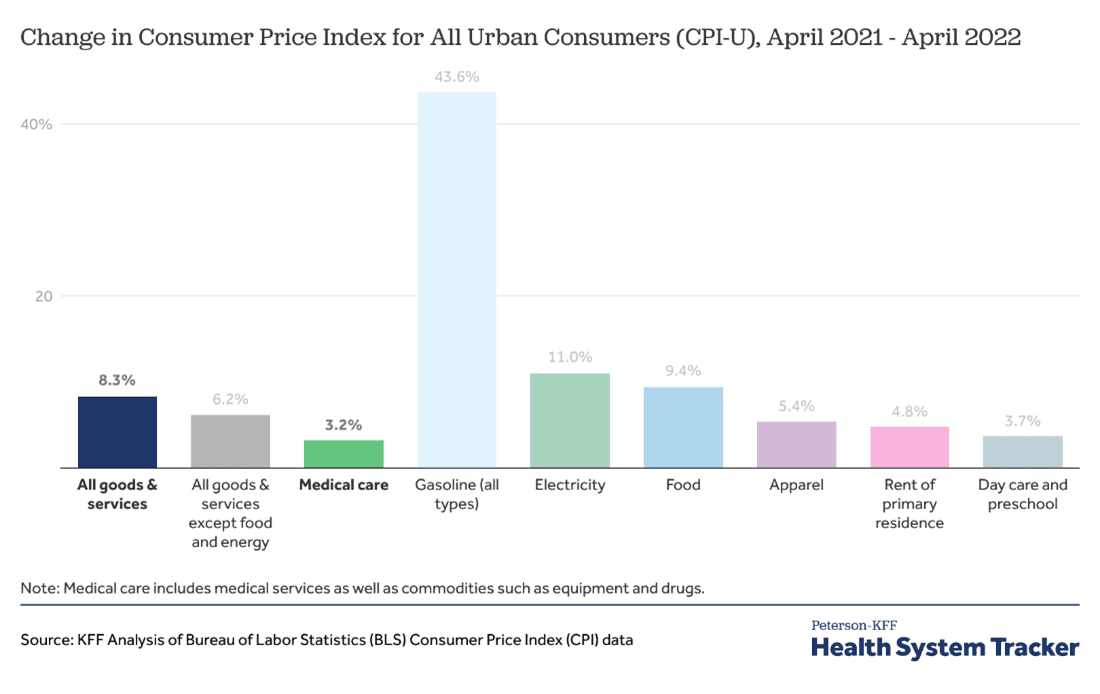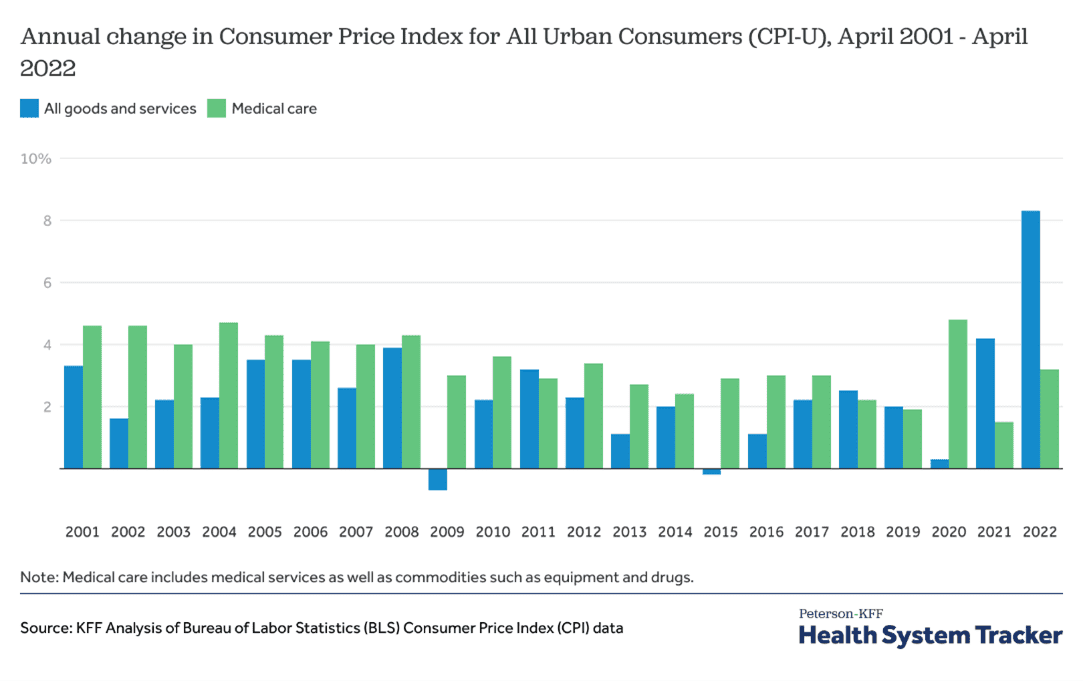Healthcare: The Industry Remains Unaffected by Inflation...Wait, Really?
Tim Duer
Healthcare, Industry Analysis, Inflation
June 6, 2022
Healthcare: The Industry Remains Unaffected by Inflation...Wait, Really?
Over the past 20 years, increases in medical expenses have outpaced all other consumer inflation in the United States. Whether it be pharmaceuticals, hospital charges, or physician fees, medical spending has become an area of significant concern for both households and federal spending; 42.88% of respondents in Causeway Solutions’ Instant Insights May 2022 survey indicated that the US was spending too much on healthcare. However, during the rapid increase in inflation and associated consumer costs over 2021 and 2022 – healthcare costs have gone largely unchanged. How is it possible that the runaway train that has been healthcare spending is relatively unaffected by the rapid increases in prices?
Americans have all seen the rapid increase in consumer costs during 2022, and the sticker shocks at the gas pump and grocery checkout continue to be more jolting each week. While gasoline costs have skyrocketed the most (+43.6%) over the past 12 months, electricity (11.0%) and food (9.4%) have also had significant increases, contributing to an overall increase in goods and services costs of +8.3% in April 2022 versus April 2021.

However, while the overall cost of goods and services has experienced this significant increase, medical care costs have only increased by 3.2%. Since 2020, there have only been five years in which the increase in cost of all goods/services outpaced medical care, and the difference was less than 1% in each of those years. For medical costs to be outpaced by more than 5% is a true anomaly. How is it possible for such a dramatic difference to occur?

As discussed in Part 3 of our Healing Healthcare series Changing Healthcare Payments, many healthcare service charges are based upon a fee-for-service model where a provider is paid by an insurer based on a negotiated rate for each service delivered. Any portion of this responsibility that falls to the patient is either based on a percentage of the agreed-upon amount (co-insurance) or a set amount (co-pay). This portion is subtracted from the negotiated rate that is paid to the provider. The agreed-upon rates are established through negotiations between an insurer and the health system/provider, along with a generally established rate by the Center for Medicare and Medicaid Services (CMS). Although there are a few exceptions, these rates are set prior to the start of the calendar year and remain in place until the next year. Therefore, the 2022 costs for most medical care fees were established in 2021 – before inflation and costs of other goods and services began to rapidly increase. While gas stations, grocery stores, and other retailers can increase their prices to match the increasing costs of goods and labor – healthcare charges must remain at the rates negotiated in 2021.
In the short term, this is great news for the American consumer; while the costs of so many other essentials continue to climb, healthcare expenses remain consistent. However, current financial difficulties still have unfortunate implications on many healthcare decisions – our June 2022 survey found that 25.3% stated that they missed healthcare appointments and 20.9% stopped medication due to finances. While many face tough decisions on how to allocate their funds, it is comforting to know that the costs of medicines or health services remain relatively unchanged. Unfortunately, it is not likely that this cost consistency will continue in the long term. As negotiations begin regarding 2023 fees, health systems are faced with their own increases in costs related to increasing staff wages and the increasing costs of supplies. Surely, these increasing expenses will be significant as new rates are determined.
Marketing Impact
While patients have rapidly increased their expectations of providers and systems, health marketers have been expected to be more agile than ever. Health care consumerism has become a divisive concept in the industry with some feeling that medicine should focus solely on care delivered and not marketing; however, marketing is an essential aspect of current care delivery. As consumers are increasingly forced to make many decisions regarding how they can best stretch their dollar – it is important for health systems to recognize that consumers are likely to assess the value derived from healthcare as well. While healthcare value is traditionally defined as “outcomes divided by costs,” it is important to recognize that each consumer may perceive their optimal outcomes differently. Health systems that are best able to recognize these individual differences, interact with patients based on these preferences, and maintain quality in their care will be best suited to remain a valued expense category for the increasingly cost-conscious consumer.
To learn more, visit Causeway Solutions to get started!